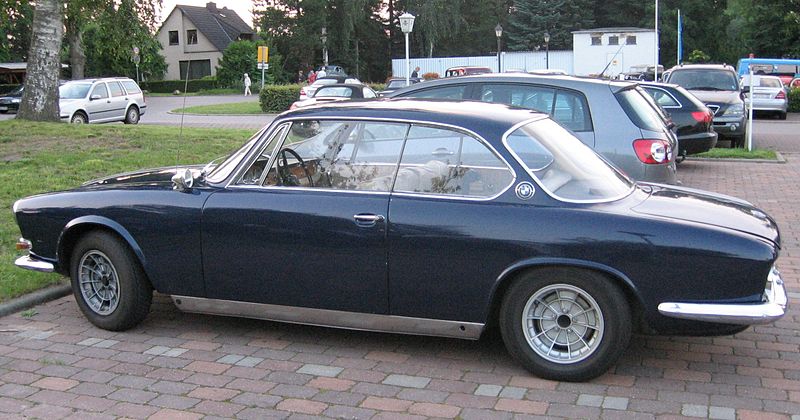bonito,
sin poder juzgar en su totalidad lo vertido en este apunte, algunas precisiones por si son de utilidad,
el abuelo de la criatura e9 CSL es el 3200 CS atribuido a Giorgetto Giugiaro a las ordenes de Bertone en los primeros 60's. o sea esto que esta aquí abajo, lejos todavía del objeto del articulo, pero apuntando maneras
sucesor de este fue el 2000 CS, ya bajo la tutela de Wilhelm Hoffmeister dentro de la propia BMW y lejos de Bertone aunque con reminiscencias (hay un coupe de fiat del 68 cuya trasera y las del e9 son almas gemelas), las reminiscencias es lo que tienen,..., pero no es ya un Bertone
por cierto, es discutible que el 2000 CS sea un e9, yo diría que no, ...y me atengo al manual de taller del e9 que atiende a 2800, 3.0, y 2500, y al CSL
y luego, por fecha el primer e9 que fue el 2800 CS que si se transformo en el e9 CSL con cambios de motor, frenos, suspensión, chapa, cristales,...
en el apartado de ligereza del modelo CSL es importante reseñar que las ventanillas traseras laterales se transformaron en paneles fijos de plexiglás, y también relevante el parachoques trasero de fibra/plástico negro y la inexistencia del delantero ya comentada, una duda que no se donde he oído es que las aletas fuesen también en aluminio ? extrañame, ya que van soldadas, pero por comentar...
por otro lado dudo que los CSL ingleses city package dispusieran de AC, el AC es inexistente en versión RHD asi que menos lo comprendo en un CSL, dudo además que tuvieran asientos traseros abatibles, simplemente nunca existieron en los e9s (imagino que es mas una errata, supongo que se refiere a delanteros)
en relación a los motores del CSL, no olvidar este:
3,15 litros
89,25 diámetro
84mm carrera
206 HP a 5600 rpms
Par 292 N.m
en un vehiculo de:
long 4630
anchura 1730
altura 1370
peso 1300 kg en orden de marcha con deposito lleno
este es el único motor que figura con todos sus datos y características específicamente como CSL en el manual de taller del e9
sobre ALPINA, no hay acreditados e9s certificados por ALPINA, dándose el caso de la existencia de componentes ALPINA en modelos no Leichtbau, dado que un cliente podía pedir a ALPINA los elementos de la transformación y luego hacerlo en su taller de confianza, es mas no solo podía, sino que no le quedaba otra,...que tiempos (esto lleva a la devaluación de esas plaquitas con el logo de ALPINA que algunos e9s lucen en sus salpicaderos,...pffff)

